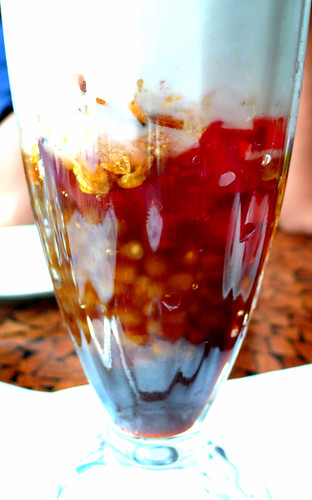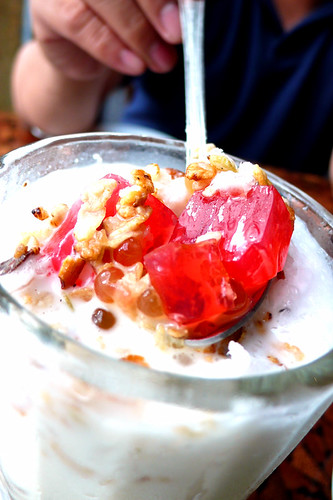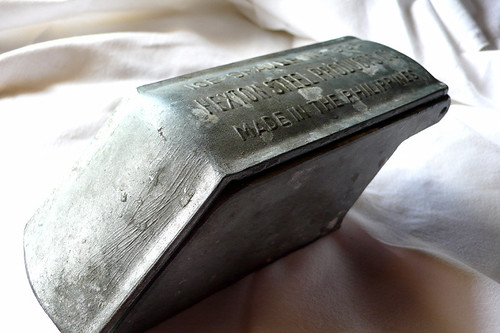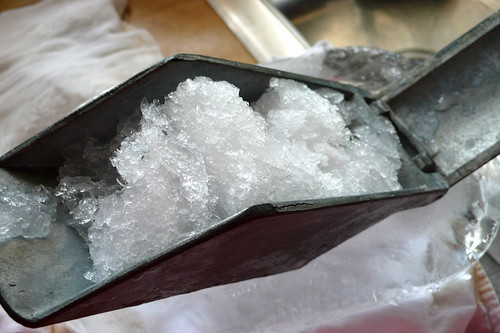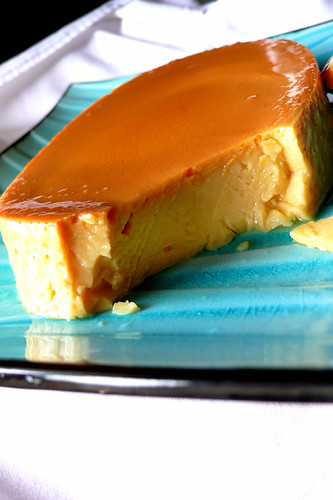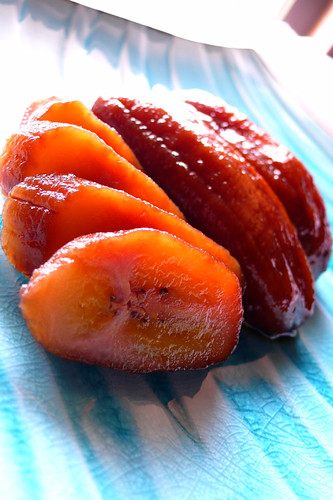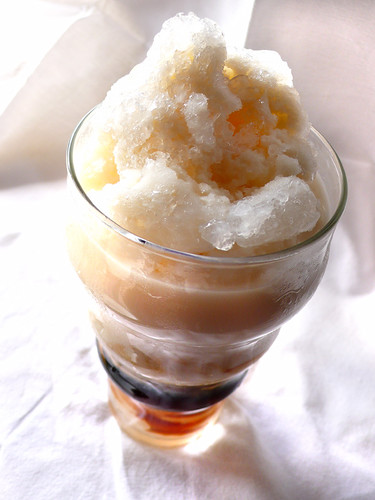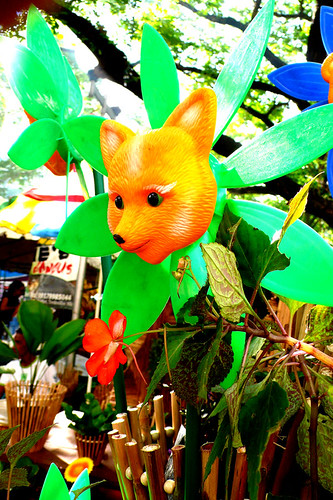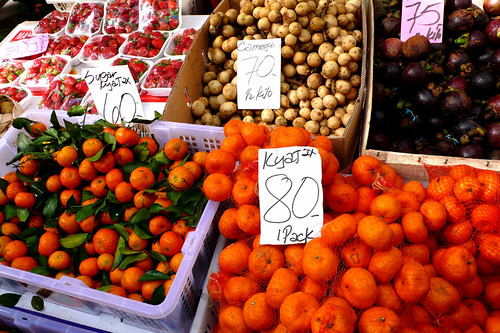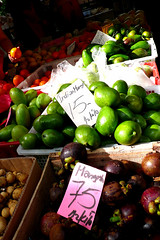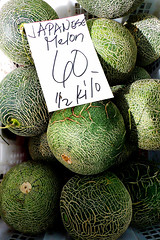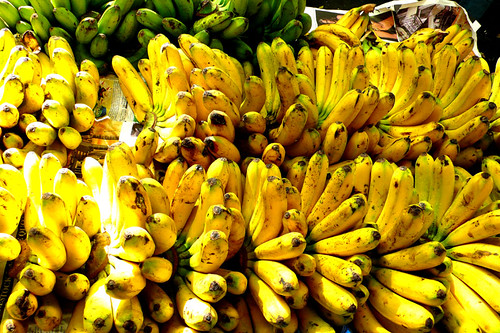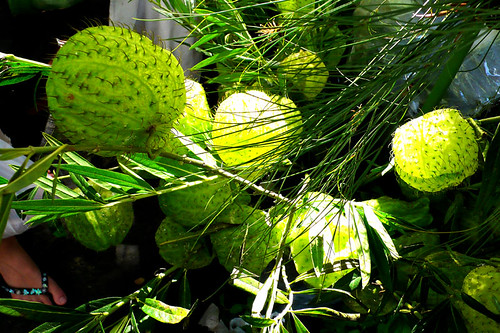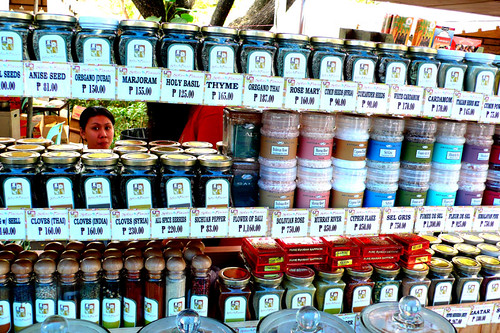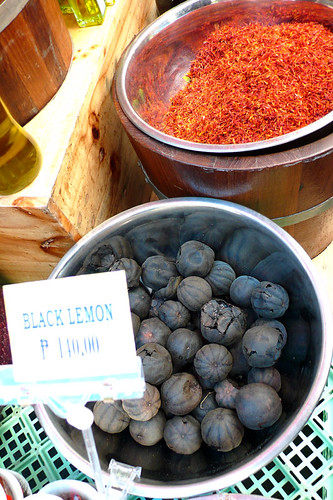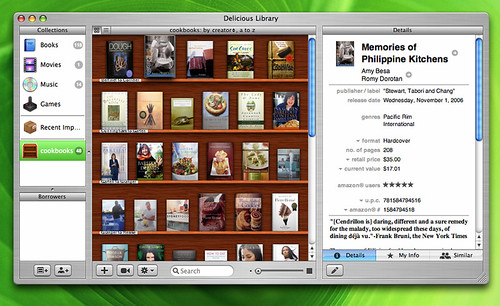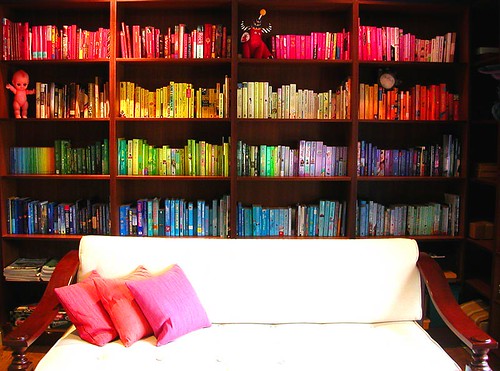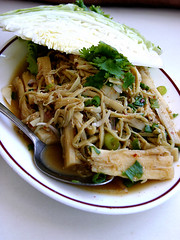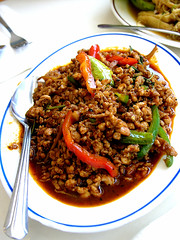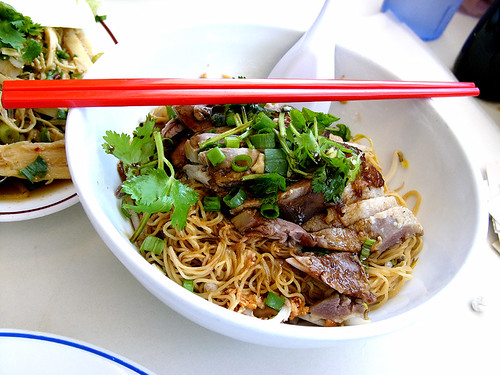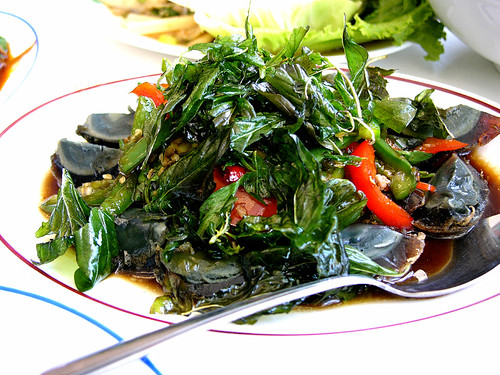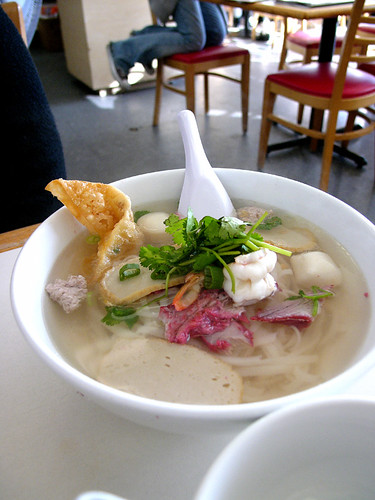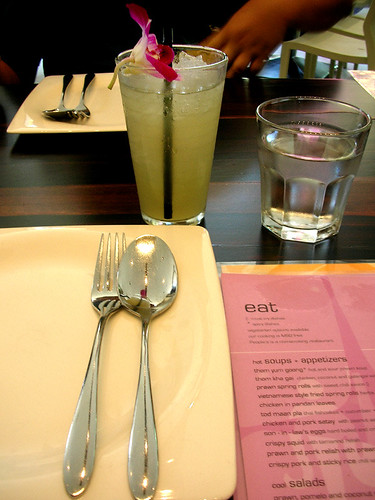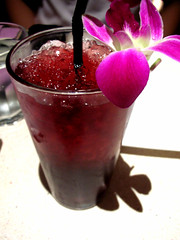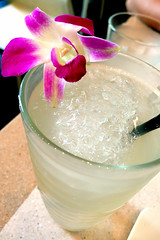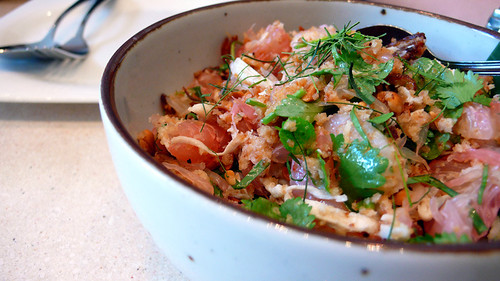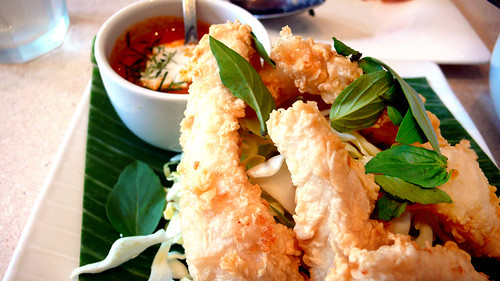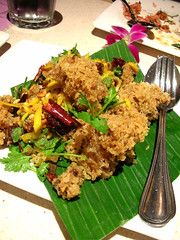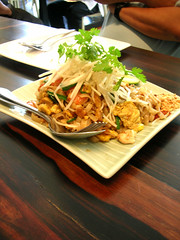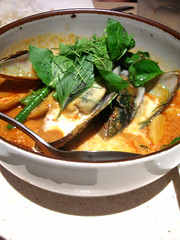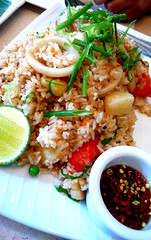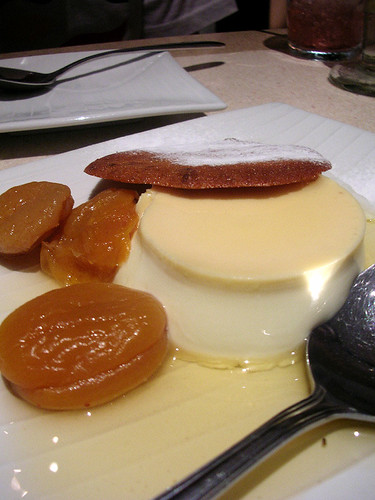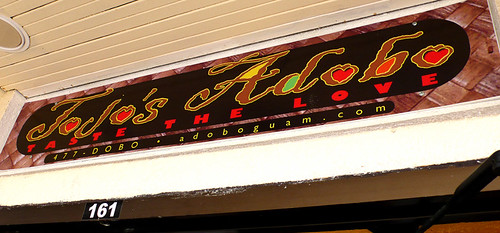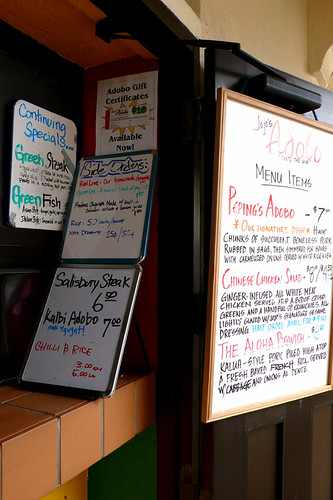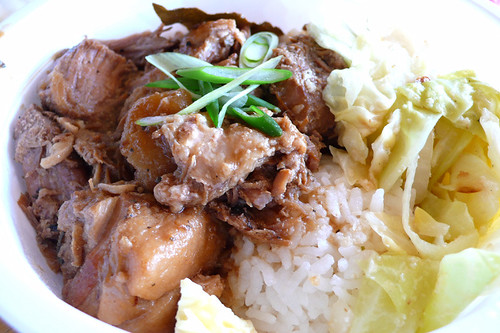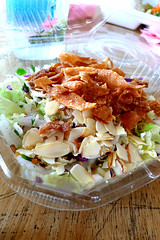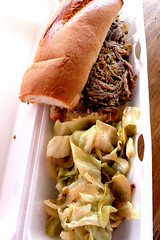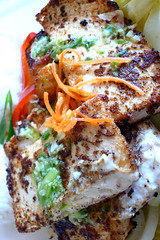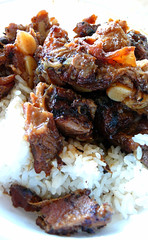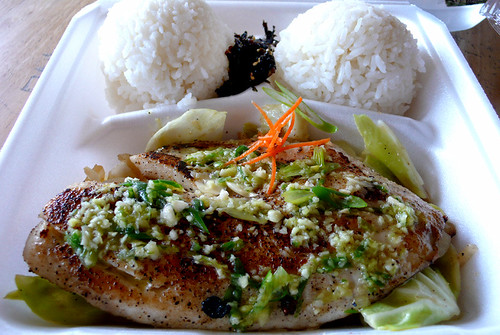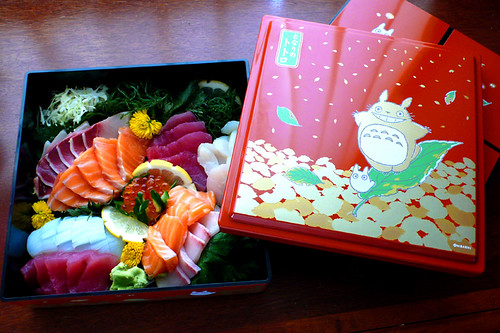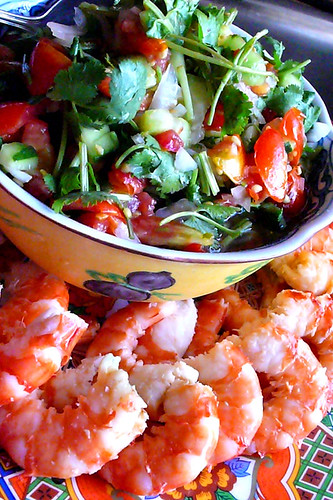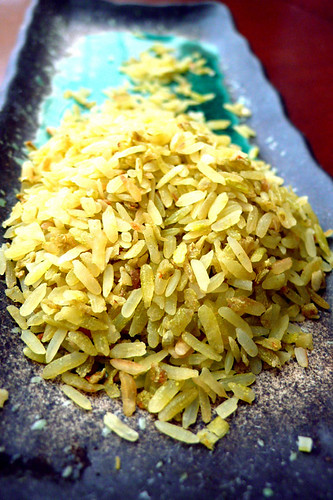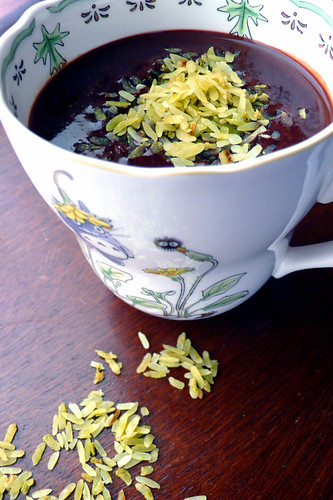it is no wonder that ice-based treats are popular in the philippines--the average yearly temperature is 26.5°C (79.7°F), and 85% humidity is not uncommon. whether you are in the city or in the provinces, for the most part (unless you're lucky to live high in the mountains), you take a shower in the morning and step out immediately feeling like you need to take another shower. you are pretty well aware that you live in the tropics.
the most popular of the ice-based treats is probably halo-halo (literally "mix-mix"), a non-specific but fairly colourful mix of preserved fruits and beans, milk , and ice served in a tall glass. the name comes not only from the array of ingredients, but also from the idea that you mix everything together so you get a milky, sludgy, icy drink. (a note about the milk in halo-halo: evaporated milk is typically used because it is rich without being too creamy, and can be used sparingly; also, when it is mixed with the ice it dilutes to a regular milk consistency and flavour.) it is often served as merienda, but equally as popular as a dessert. or, a dessert at merienda :)
the most popular of the ice-based treats is probably halo-halo (literally "mix-mix"), a non-specific but fairly colourful mix of preserved fruits and beans, milk , and ice served in a tall glass. the name comes not only from the array of ingredients, but also from the idea that you mix everything together so you get a milky, sludgy, icy drink. (a note about the milk in halo-halo: evaporated milk is typically used because it is rich without being too creamy, and can be used sparingly; also, when it is mixed with the ice it dilutes to a regular milk consistency and flavour.) it is often served as merienda, but equally as popular as a dessert. or, a dessert at merienda :)
i've just come to learn about guinomis, another icy confection, which i'm told is a popular lenten repast, probably because it has less ingredients than halo-halo, and is also dairy-free. why, why, whyyyyy hadn't i known this before?! the creamy white expanse you see is from coconut milk, which covers a combination of nata de coco (a fermented but non-alcoholic coconut water gel), sago or tapioca pearls, pinipig (toasted rice flakes--the older sibling of duman), and a palm sugar syrup. the whole thing is served in a tall glass as well, covered by a tiny mountain of shaved ice. i absolutely love the non-dairyness of this; the coconut milk is creamy, but not über-thick with actual cream. it is not overloaded with too many flavours so you can really taste the caramel of the palm sugar syrup and the toasty rice flavour of the pinipig, which permeates the liquid. the nata de coco and sago/tapioca provide a nice, chewy texture against the flurry of quick melting ice flakes.
in fact, the ice that is used in these desserts is quite important--the finer the better. it is much finer than crushed ice, or even snow cone ice; japanese kakigori, malaysian/singaporean ice kachang, the southeast asian cendol and hawaiian shave ice have the same consistency. there are machines that can produce this fine ice, but for my money, i usually turn to a hand-held ice shaver. it works like a wood plane--the bottom has a long blade that is run across the surface of a block of ice; the resulting ice shavings are collected within, like a tiny bank of snow.
it usually takes about two of these little caches for one serving of halo-halo or guinomis, which really takes no time at all, once you get a rhythm going. it also seems to be more satisfying than just pressing a button or swirling around a handle on a machine; perhaps it's that little extra effort that makes it all the more sweeter. this particular type of shaver is still quite popular in the philippines, and is still made there; we've had ours for thirty years now, and it hasn't failed yet. if you are stateside and looking for one, this mainland company sells a similar one.
also quite fashionable these days is a specialty of our family province of pampanga: white halo-halo. it is basically the same as regular halo-halo , only it contains monochromatic ingredients. the most famous example of this is from a restaurant in the town of guagua called razón's; they use only leche flan (a baked milky custard), and saba bananas boiled in a palm sugar syrup. another popular variation has little milky candies in it--pastillas de leche or yemas--and not much else. i prefer the razón's version, which i make at home, with the addition of (colour-free) nata de coco or kaong (sugared date palm nuts) for a little texture.

